The Wilson Creek Museum's curator appears to be either uneducated or misinformed. It's sad that the average civil war Cavalry relics collector seems to know more about the relics than typical civil war museum staff do.
Persons wanting to CORRECTLY identify and time-date a military relic should pay close attention to the object's form/shape and its construction, meaning, what material(s) it is made of. Civil war horse-harness accouterment discs were made of either solid-cast brass ("bit bosses") or low-convex thin stamped sheetbrass filled with solder which held brass or iron attachment wires. In the Indian Wars era, the discs changed to having a sheet-iron back. By the early 1900s, that version was replaced with the type you found, which has no "back" component and uses integral fold-over tabs for attachment to the leather.
Creskol and DC Matt are correct, your stamped-sheetbrass horse/mule harness "domed" US accouterment disc with three integral attachment-tabs on its rim is definitely from the early-1900s through the present. Although the US Army almost entirely quit using horses around the start of World War Two, some are still used for Ceremonial purposes... which includes this version of horse-harness & US-marked accouterments.
The photos below show:
The civil war through Span-Am War solid-cast brass "bit boss" disc, with holed "ears" for attachment,
The civil war cavalry rosette having a solder-filled back with (badly rusted) iron wire attachment loops,
the Indian-Wars-through-Span-Am-War sheet-iron back, and
the 20th-Century "integral tabs."
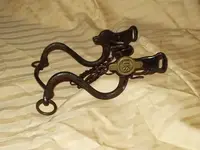
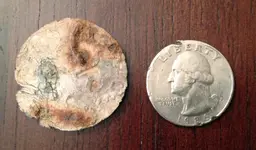
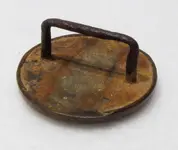
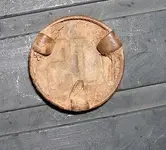
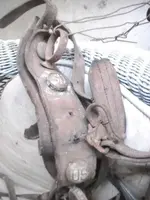
 But truthfully, in my opinion, almost any "non-novice" collector of civil war to WW1 US Cavalry militaria knows the form and time-period of the various US-marked accouterments. Owning various "collectors' relic reference books" is part of that. If the Wilson's Creek Battlefield Museum is a US National Park Service facility, such books are probably in its reference library, easily available for the Curator to read. Most US-NPS civil war Battlefield Park museums have such a library, containing excellent collector-written reference books, such as those on buckles, buttons, swords, bullets, Cavalry equipment, artillery projectiles, etc.
But truthfully, in my opinion, almost any "non-novice" collector of civil war to WW1 US Cavalry militaria knows the form and time-period of the various US-marked accouterments. Owning various "collectors' relic reference books" is part of that. If the Wilson's Creek Battlefield Museum is a US National Park Service facility, such books are probably in its reference library, easily available for the Curator to read. Most US-NPS civil war Battlefield Park museums have such a library, containing excellent collector-written reference books, such as those on buckles, buttons, swords, bullets, Cavalry equipment, artillery projectiles, etc.